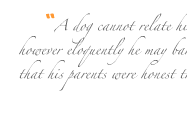| week 2, lab 1 (2/1) |
|
in the first lab session, we started to look at set theory. we won’t need much of set theory in this class, just the basics. first we needed to know what set are, and we saw that to form set, we can just put any number of things together - concrete things like you, me, chairs, or buildings, as well as more abstract things, like numbers, words, or sets themself. all that matters it that we can decide for any object among the objects we want to talk about whether it belongs to a given set, or not. that is, the only means to distinguish sets is by looking at their members. we looked at different ways of writing out sets, for instance by simply listing all members (1a), or by specifying conditions that an object has to satisfy in order to be a member of the set (1b). different ways of specifying a set might pick out the very same set - namely when they pick out the same members. once we knew what sets are, we went on to make statments, like “such and such is an element of this set” or “this set is a subset of that set”, using the "is an element of" symbol (2), and the "is a subset of" symbol (3). last, we looked at ways of creating new sets from any two sets. we mostly focused on the operations of union and intersection. the union operation collects all members of each set into a new set (4). the intersection operation collects only those members that two sets have in common into a new set (5). in the process of this, we got to know a particular set - the one which has no members, called the empty set, sometimes written as a circle with a slash through it (6). in the end we quickly looked at two more definitions, the ones for complement and difference (7 and 8). we'll get back to them in the next lab session. |
| back |





